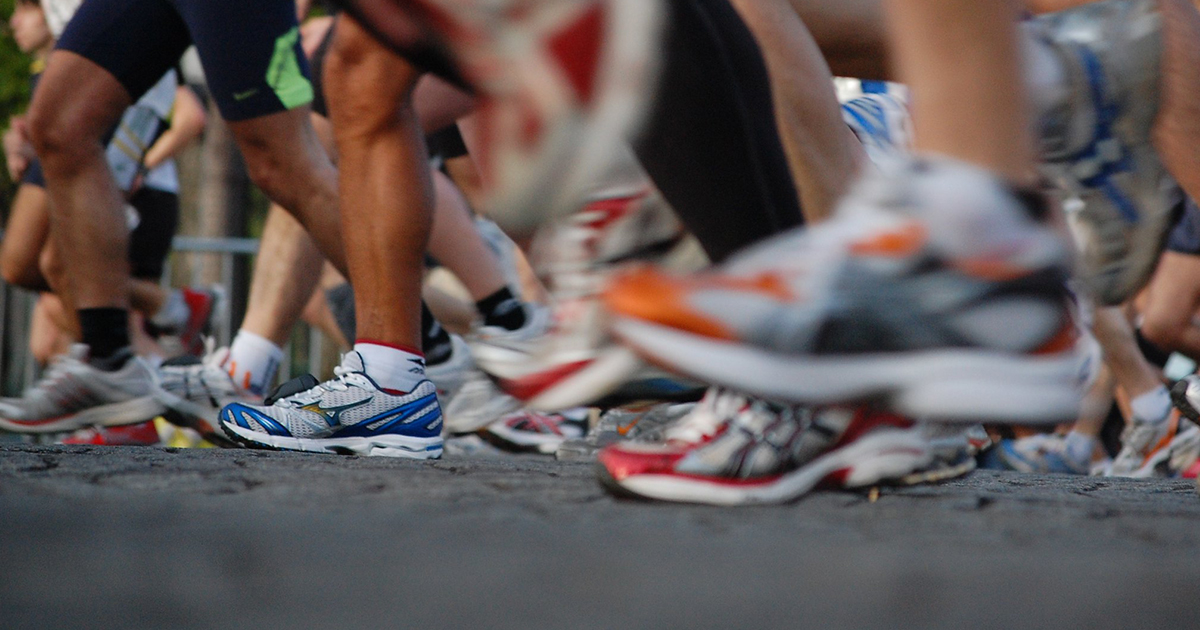

If you’ve been enjoying these curated article summaries that dive into cultural, creative, and technological currents, you may find the discussions and analyses on our Substack page worthwhile as well. There, I explore themes and ideas that often intersect with the subjects covered in the articles I come across during my curation process.
While this curation simply aims to surface compelling pieces, our Substack writings delve deeper into topics that have piqued our curiosity over time. From examining the manifestation of language shaping our reality to unpacking philosophical undercurrents in society, our Substack serves as an outlet to unpack our perspectives on the notable trends and undercurrents reflected in these curated readings.
So if any of the articles here have stoked your intellectual interests, I invite you to carry that engagement over to our Substack, where we discuss related matters in more depth. Consider it an extension of the curation – a space to further engage with the fascinating ideas these pieces have surfaced.
This past summer, I booked a plane ticket to Los Angeles with the hope of investigating what seems likely to be one of the oddest legacies of our rapidly expiring decade: the gradual emergence, among professionally beautiful women, of a single, cyborgian face. It’s a young face, of course, with poreless skin and plump, high cheekbones. It has catlike eyes and long, cartoonish lashes; it has a small, neat nose and full, lush lips. It looks at you coyly but blankly, as if its owner has taken half a Klonopin and is considering asking you for a private-jet ride to Coachella. The face is distinctly white but ambiguously ethnic—it suggests a National Geographic composite illustrating what Americans will look like in 2050, if every American of the future were to be a direct descendant of Kim Kardashian West, Bella Hadid, Emily Ratajkowski, and Kendall Jenner (who looks exactly like Emily Ratajkowski). “It’s like a sexy . . . baby . . . tiger,” Cara Craig, a high-end New York colorist, observed to me recently. The celebrity makeup artist Colby Smith told me, “It’s Instagram Face, duh. It’s like an unrealistic sculpture. Volume on volume. A face that looks like it’s made out of clay.”
Instagram, which launched as the decade was just beginning, in October, 2010, has its own aesthetic language: the ideal image is always the one that instantly pops on a phone screen. The aesthetic is also marked by a familiar human aspiration, previously best documented in wedding photography, toward a generic sameness. Accounts such as Insta Repeat illustrate the platform’s monotony by posting grids of indistinguishable photos posted by different users—a person in a yellow raincoat standing at the base of a waterfall, or a hand holding up a bright fall leaf. Some things just perform well.
The human body is an unusual sort of Instagram subject: it can be adjusted, with the right kind of effort, to perform better and better over time. Art directors at magazines have long edited photos of celebrities to better match unrealistic beauty standards; now you can do that to pictures of yourself with just a few taps on your phone. Snapchat, which launched in 2011 and was originally known as a purveyor of disappearing messages, has maintained its user base in large part by providing photo filters, some of which allow you to become intimately familiar with what your face would look like if it were ten per cent more conventionally attractive—if it were thinner, or had smoother skin, larger eyes, fuller lips. Instagram has added an array of flattering selfie filters to its Stories feature. FaceTune, which was released in 2013 and promises to help you “wow your friends with every selfie,” enables even more precision. A number of Instagram accounts are dedicated to identifying the tweaks that celebrities make to their features with photo-editing apps. Celeb Face, which has more than a million followers, posts photos from the accounts of celebrities, adding arrows to spotlight signs of careless FaceTuning. Follow Celeb Face for a month, and this constant perfecting process begins to seem both mundane and pathological. You get the feeling that these women, or their assistants, alter photos out of a simple defensive reflex, as if FaceTuning your jawline were the Instagram equivalent of checking your eyeliner in the bathroom of the bar.
Read the rest of this article at: The New Yorker
Yes, you can get bad coffee in Vienna. Vienna is known for its beautiful cafés, where philosophers, poets, and scientists have found inspiration over endless cups of fantastic coffee for hundreds of years. Coffee is still at the heart of Viennese culture; the café is an extension of your living room, a place to meet friends or just read.
But there I was, at a conference center in Vienna for the 2012 meeting of the European Geological Union, one of about 11,000 scientists struggling to find a cup of coffee during the 20-minute coffee break. I am not a geologist, but I was invited to give a talk on the link between exoplanets and our own planet, a critical connection I’d pioneered.
The coffee in the conference center was free for attendees, but as I looked at the brownish-grayish liquid in the white plastic cup in my hand, I wondered how I could have forgotten to pick up a cup of coffee on my way.
As I stood in the vast hall filled with poster displays, pondering the unfairness of life, I heard steps echoing along the corridor. I was pretty much alone because by the time I got through the incredibly long coffee line, the next conference session had already started. When you enter a room late, it feels like everyone speculates about the reason for your late arrival, so I’d decided to look at the posters of new scientific work instead.
The echoing footsteps indicated that another person had decided to make a foray into the empty poster hall. And it was someone I knew.
William Borucki, an American astronomer working at the NASA Ames Research Center, is a giant in my field—someone who managed, against all odds, to get the NASA Kepler space telescope launched. By against all odds, I mean that he proposed the Kepler mission and got rejected by NASA four separate times.
But Borucki just did not give up.
He knew he had an important mission that could find out how many planets circle other stars. Kepler was designed to look repeatedly at the same region of sky, searching more than 150,000 stars at the same time for the tiny brightness changes that revealed their planets. Borucki kept a small team of a dozen scientists motivated, proposing again and again until finally, after thousands of written pages and ever-more-sophisticated experiments to show that the technology would work, the next time was the charm. The astonishing Kepler mission, with its 55-inch mirror, found thousands of worlds circling other stars and rewrote our understanding of planets.
Borucki is also one of the nicest people you could ever know. We had met before, at a small astronomy conference where I presented my work on how to figure out if a planet could be habitable. But since the Kepler mission launched in 2009, he had constantly been surrounded by people, all curious for the latest news from Kepler, so I did not expect him to remember me. Surprisingly, when he saw me, he smiled and headed over. I remember thinking that maybe he wanted to know where I’d gotten the hard-earned coffee I was holding. I debated whether I could recommend it.
Read the rest of this article at: Nautilus
Like any small town that isn’t yours, Sambuca di Sicilia, located about an hour’s drive south of the Sicilian capital, Palermo, feels a little intimidating at first. Stroll its perimeter on a late afternoon in winter, when the sun sets the buildings alight, and eyes follow you. Order the town’s signature minni di virgini—breast-shaped cakes filled with cream, chocolate chips, and squash jam—and a hush silences the chatter in the local bakery. It’s not unfriendly, this exaggerated alertness, but it does make you, the visitor, feel a bit self-conscious.
By the time I walk into a small restaurant that first evening seeking dinner, my self-consciousness has reached an uncomfortable peak. The restaurant’s only other guests, a middle-aged couple, fall quiet as I make my way to a table. After the waiter and I stumble through my order, impeded by his poor English and my worse Italian, I pull out a book to hide my awkwardness while I wait for the food. But when the first course arrives—a heap of ocher-tinted pasta topped with crimson shrimp and shards of pistachios—I am so clearly delighted by the dish that the waiter then decides we are friends. He introduces himself by name, Giovanni, and when two women with their children enter the restaurant, he seats them next to me and introduces them as well. “La famiglia,” he says—his own, and that of the chef, who, stepping out from the kitchen to kiss his wife, also comes over to greet me.
Read the rest of this article at: Afar
What exactly is the difference between walking and running? For most of my life, I thought I knew.
The 19th-century explorer Alexandra David Neel recounts the story of encountering, on one of her many Himalayan treks, a lung-gom-pa. At first, the lung-gom-pa just appeared as a black speck on a remote plateau but soon showed itself as a man, traveling at impossibly high speeds across the craggy ground. Neel’s guide informed her that this was a Tibetian mystic, deep in a spiritual trance, whose mind and body had run away from him. She should not speak to the lung-gom-pa for fear that, upon breaking his trance, he would immediately die of exertion. The mystic passed them in a flash, his face serene, and left them in the dust.
Matt—my older, cross-country–running brother—told me this story when I was a kid. This was running: an effortless blur, divine or at least superhuman. Somehow Matt managed this. He was not particularly athletic, but high school running slowly transformed him into something akin to the lung-gom-pa. One year, my mother and I went to the state championship to watch him race the other lungs-on-legs. There he was: in a trance, face expressionless, deep in an ecstatic state. This was running. What I did in my junior high gym class wasn’t.
Don’t feel bad for me. I just wasn’t a runner. I was, I thought, naturally big boned and therefore never fleet of foot. I did better in water, where I didn’t have to carry my own weight. I could swim for a long time, and relatively quickly, but as I hit the road and reached what I considered a proper speed, my guts started to hurt, and I’d have to stop after a few minutes. My brother assured me that this would go away eventually: “Keep at it, Bear,” he’d say. I gave up almost immediately. I was a walker.
My stomach never stopped hurting, but I did eventually become a runner. It was in college when my shuffle overcame itself and became a run. I was studying philosophy at the time and learned that the ancient Greeks had regarded foot races as a sort of spiritual and intellectual competition. There was even a science behind it called the “tetra,” a four-stage process of preparation, exertion, rest, and moderate activity. Day by day, I followed the tetra and I became faster. At some point in my early 20s, I decided that only the hard day actually mattered. Aristotle warned against overtraining, about not omitting the necessary downtime to recover, but I never liked Aristotle or his call for moderation. Instead, I remembered the lung-gom-pa, and ran (hard) every day—for 20 years. The golden mean was for Sunday strollers, or worse, the old shufflers who used to run.
Read the rest of this article at: The American Scholar
They appear every spring, like crocuses or robins or perhaps black flies: commencement addresses. Thousands of them, across the country and across the variety of American higher education—two-year schools, four-year schools, small colleges, universities both public and private, schools of every kind. And they will appear again, despite how unusual this spring has been. Many campuses have been roiled by protests about the war in Gaza, and some institutions will curtail graduation ceremonies. But the members of this undergraduate class, who had their high-school graduations shut down by COVID in 2020, have long looked forward to a second chance at a commencement ceremony. Over the next month or so, even in the face of disruptions or cancellations, commencement addresses will be delivered to about 4 million students earning some kind of college degree.
Most of these addresses will pass into oblivion. It is a cliché for commencement speakers to open their remarks by confessing that they remember nothing about their own graduation: They have forgotten not just what was said, but who said it. Yet even if most commencement addresses prove far from memorable, the press and public eagerly anticipate them. News stories appear throughout the winter and early spring announcing who will speak where. Then, when the speakers have spoken, journalists and commentators rush to judge which should be considered the year’s best.
A few speeches are anointed as classics to be visited or revisited for years. Admiral William McRaven’s 2014 address at the University of Texas at Austin has had more than 60 million YouTube viewers, all eager to learn the 10 takeaways from his Navy SEAL training. Thousands of Americans likely hear echoes in their head every morning of his promise that if you “make your bed,” it will change your life. More than 60 million people have also watched Steve Jobs’s Stanford University speech from 2005, which eerily anticipates his own death and urges graduates to “follow your heart.” J. K. Rowling’s 2008 Harvard talk about failure and imagination has attracted tens of millions of viewers, as has David Foster Wallace’s 2005 Kenyon College address, “This Is Water.” All of these also ended up in print as well, designed to make attractive gifts. Admiral McRaven’s book became a New York Times No. 1 best seller. When Wallace died, in 2008, The Wall Street Journal republished the speech in his memory.
Commencement greatest hits reach well beyond these chart-toppers. Time, The New York Times, The Washington Post, Slate, Elle, and countless other outlets run articles each year on the season’s winners. “Looking for some new words of wisdom?” NPR asks on its website. The headline of its online database lists the 350 “Best Commencement Speeches, Ever” in alphabetical order (but, curiously, by first name), from Aaron Sorkin to Zubin Damania. Can all 350 really be the “best”?
Read the rest of this article at: The Atlantic




